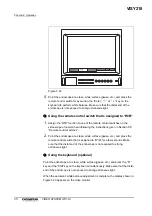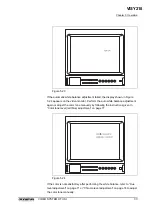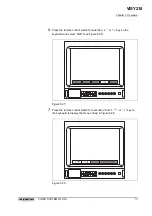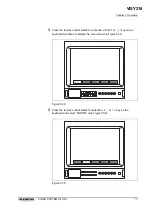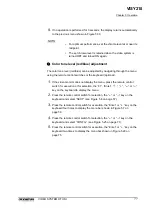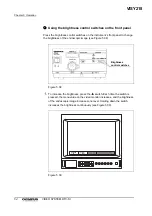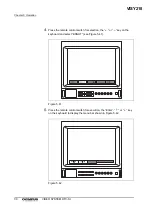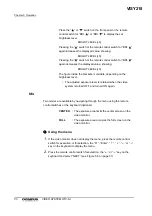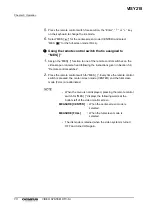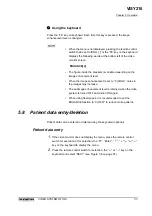
80
Chapter 5 Operation
VIDEO SYSTEM OTV-SI
5.6
Brightness adjustment
•
If the brightness is set to its maximum level, prolonged
observation could cause patient injury. Always use the
minimum level of illumination necessary for adequate
viewing. Whenever possible, avoid close, stationary viewing
and do not leave the distal end of the endoscope close to
mucous membranes for a long time. Intense endoscopic
illumination may cause mucosal burns.
•
Do not touch the metal plug of the light guide or the distal end
of the endoscope immediately after use because they are
extremely hot.
•
Do not bring the distal end of a videoscope, fiberscope, rigid
endoscope or light guide cable in contact with a human body
or a flammable object such as an operating room drape.
Otherwise, the light may cause operator or patient injury or
ignite the flammable object.
Depending upon the distance between the distal end of the
endoscope and the object, halation will result even if the
automatic brightness control and exposure level function has
been performed. In this case, set the light intensity manually.
Automatic and manual brightness adjustment
The brightness adjustment control can be changed using the auto/manual
brightness selector on the front panel, the remote control switches or the
keyboard (optional).
Using the auto/manual brightness selector on the front
panel
Press the auto/manual brightness selector on the instrument’s front panel to
change between automatic and manual brightness control (see Figure 5.34).
When the automatic brightness control is selected, the auto indicator is lit in
green. When the manual brightness control is selected, the manual indicator is lit
in green.
VISY218
Summary of Contents for OTV-SI
Page 2: ...VISY218...
Page 6: ...Contents iv VIDEO SYSTEM OTV SI VISY218...
Page 148: ...142 Chapter 7 Troubleshooting VIDEO SYSTEM OTV SI VISY218...
Page 156: ...VISY218...
Page 159: ...INSTRUCTIONS COMPACT TROLLEY TC C2 VISY218...
Page 171: ...VISY218...
Page 172: ...VISY218...
Page 173: ...VISY218...



